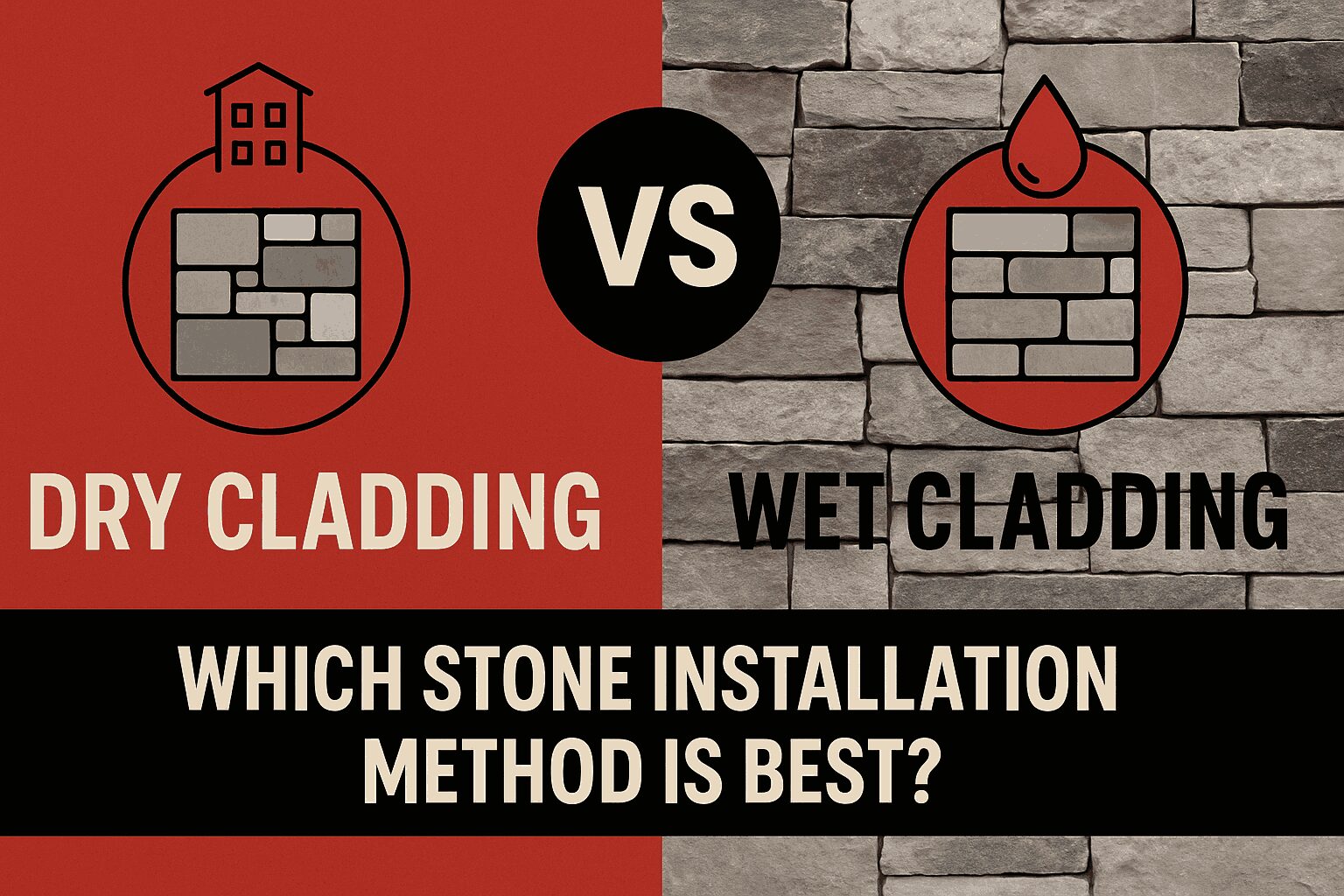
When it comes to transforming the look and durability of your walls, stone cladding is one of the most effective and long-lasting solutions. Whether indoors or outdoors, cladding adds both visual appeal and protection. But before you start, one key decision awaits: should you go for dry cladding or wet cladding?
Both installation methods have their benefits, limitations, and ideal applications. Understanding their differences will help you choose the right technique for your space.
Stone cladding is the process of applying a thin layer of natural stone or stone-like material to walls. It enhances aesthetics, improves insulation, and protects against weather damage. In modern architecture, it’s widely used in exterior wall cladding systems as well as interior feature walls.
Also known as the mechanical fixing method, dry cladding involves securing stones to the wall using embedded metal anchors, brackets, or a frame system without adhesive or mortar.
Tip: For granite dry cladding or other heavy stone types, ensure you hire experienced professionals. The process requires thicker stones to avoid cracks during drilling.
Also called the direct-adhered method, wet cladding involves fixing stones to the wall using cement-based adhesives or mortar.
Drawback: Over time, the adhesive can weaken due to moisture or extreme weather, leading to chipping or detachment.
Feature | Dry Cladding | Wet Cladding |
Installation Method | Mechanical fixing | Adhesive bonding |
Best For | Exterior walls, heavy stones | Interiors, thin stones |
Durability | Very high | Moderate |
Cost | Higher | Lower |
Maintenance | Low | Moderate to high |
Flexibility | High | Low |
Your decision should be based on:
Both dry cladding and wet cladding enhance your walls with natural stone beauty and durability. Dry cladding excels in structural strength and longevity, making it ideal for high-impact and outdoor use. Wet cladding, on the other hand, offers an elegant finish at a more affordable price for interior spaces.
At Stone World, we help you select the right stone cladding installation method tailored to your design vision, budget, and site conditions, ensuring your walls remain stunning for years to come.
Q1. What is the main difference between dry and wet cladding?
Dry cladding uses mechanical anchors, while wet cladding relies on adhesives to fix the stone to the wall.
Q2. Which cladding method lasts longer?
Dry cladding generally lasts longer due to its mechanical fixing and resistance to weathering.
Q3. Is wet cladding suitable for exterior walls?
It can be used, but dry cladding is recommended for better weather resistance.
Q4. Can I install dry cladding myself?
No, dry cladding requires skilled professionals due to the complexity of the installation.
Q5. What stones work best for wet cladding?
Thinner stones like marble, sandstone, and certain limestones are best suited for wet cladding.